Counting Macros For Beginners: A How-To Guide
This post may contain affiliate links. As an Amazon Associate I earn from qualifying purchases.
This counting macros for beginners guide breaks down the essentials of counting macros. Whether you’re aiming to lose weight, gain muscle, or improve your overall diet, understanding macros is key. We’ll cover everything from calculating your needs to practical tips for everyday eating.

What Are Macros
You’ve probably heard the term “macros” tossed around a lot, especially in conversations about healthy eating or fitness goals. But what exactly are they?
“Macros” are short for macronutrients.
In simple terms, macros are the big three nutrients that make up the food we eat: proteins, carbohydrates, and fats. They’re like the main building blocks in our diet, each playing a unique and crucial role in keeping our bodies running smooth.
Wondering what foods fall into each macro category? Check out my comprehensive Macro Food List.
And while you may not realize it- you are consuming macronutrients every time you eat. Protein, carbs, and fats, are the three major macronutrients that your body needs to function.
Together, these three macronutrients make up a food’s calories.

Protein
Protein is the superstar macro when it comes to weight loss.
Protein is the slowest macronutrient to digest – which means that your body will use more energy to digest it – which results in an increased calorie burn and a boost to your metabolism.
Protein also helps to build, repair, and maintain muscle mass. The more muscle you have = the higher your metabolism is.
Sources of protein: Chicken, egg whites, ground turkey/chicken. lean ground beef, protein powder, tuna, shrimp, Greek Yogurt
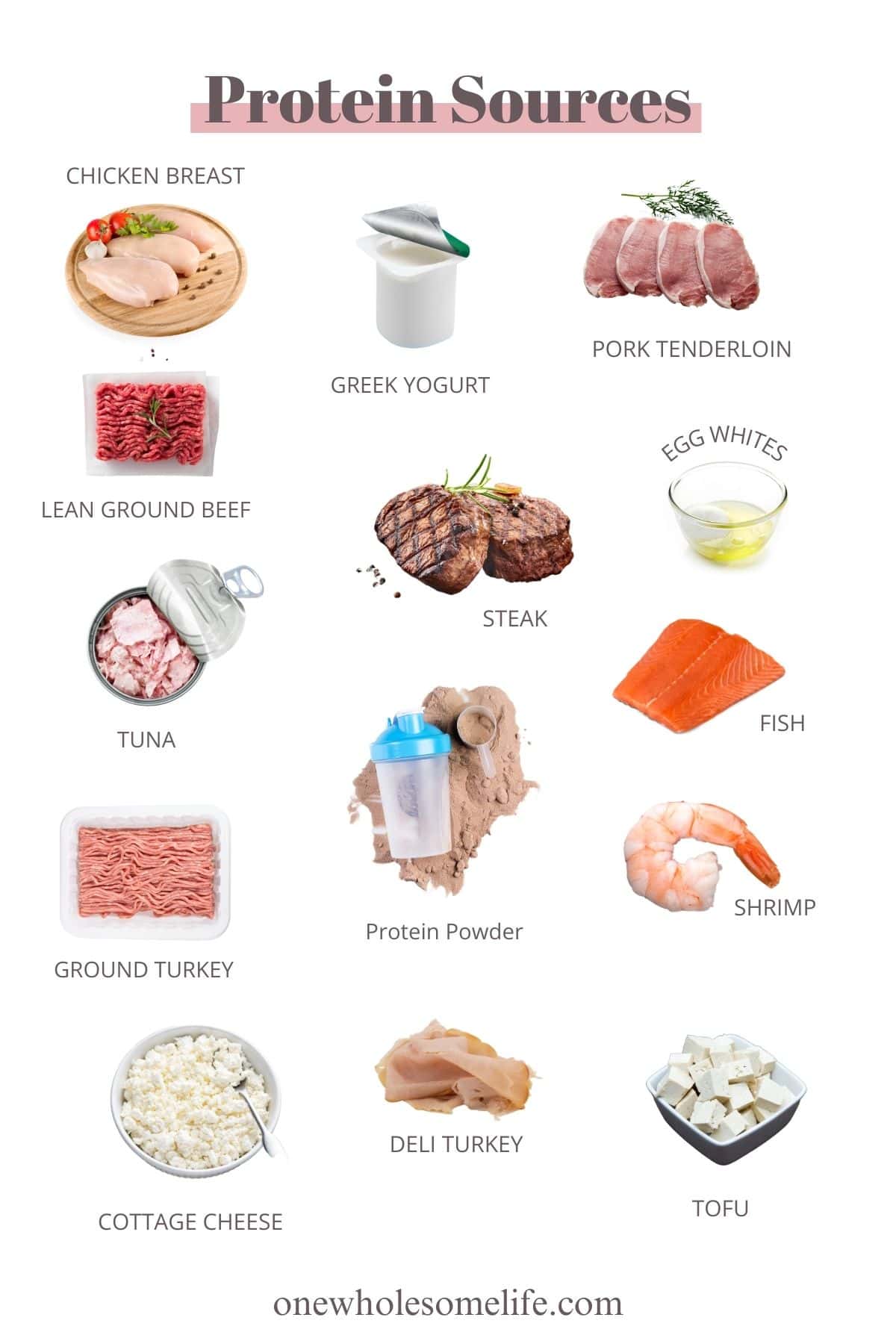
Carbs
Carbohydrates, or carbs as we often call them, are the body’s main energy source. They’re like fuel for your car; without them, you’d feel like you’re running on empty.
Carbs tend to get a really bad wrap but they are not the enemy.
The problem with carbs is that they are usually the macronutrients that are the easiest to overeat (because they are delicious 😜)
It’s about finding the right balance – prioritizing high fiber complex carbs (whole grains, fruits, veggies, etc.) while still allowing some room for more processed (or fun) simple carbs. This approach ensures you can enjoy a variety of foods without compromising your overall nutrition.
Sources: Fruit, veggies, rice, pasta, bread, crackers, rice cakes, quinoa, oats, potatoes.
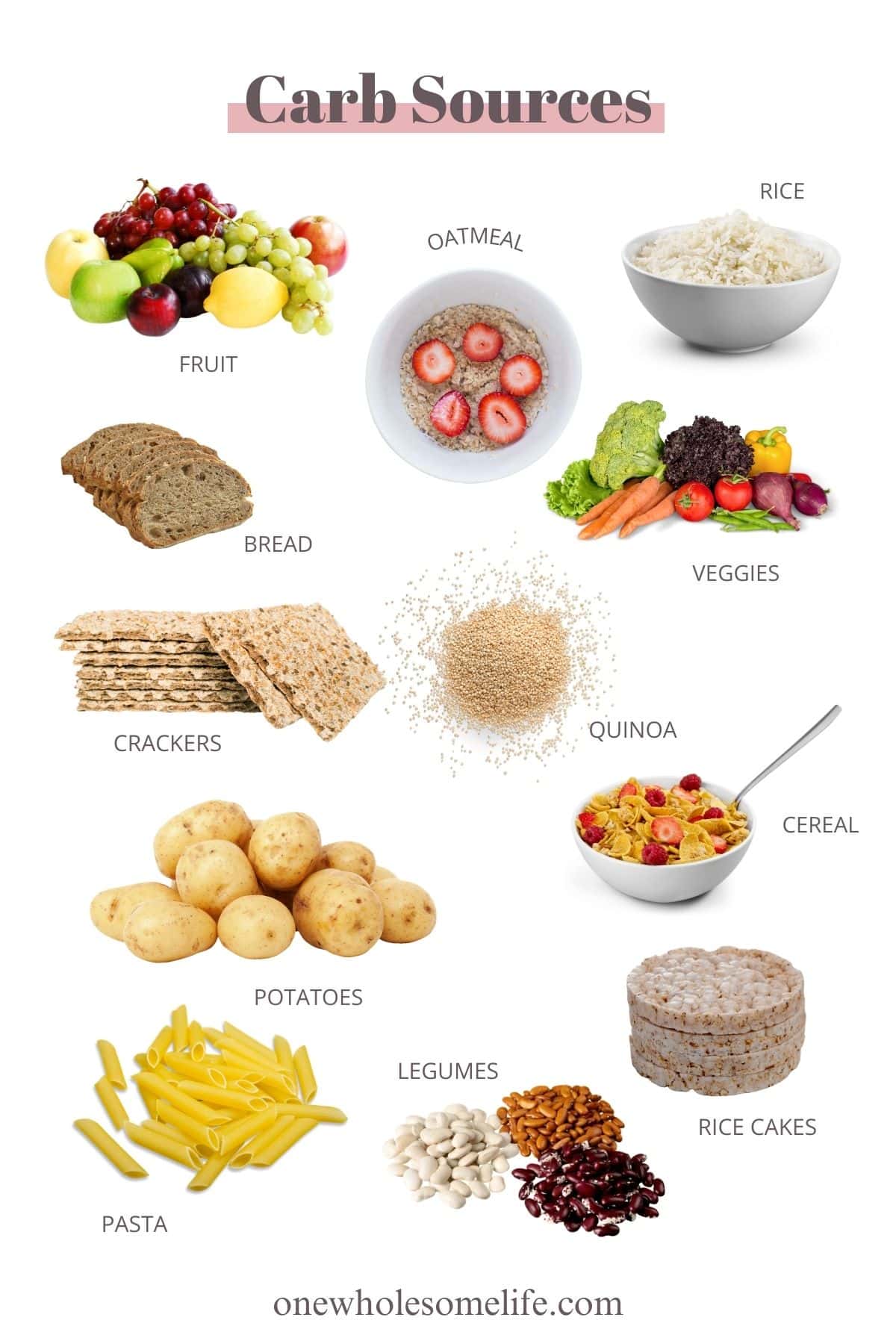
Fat
Depending on who you talk to, fat can also get a bad wrap. But fat is an essential macronutrient and fat is our friend.
Fat helps to support cell growth, protects our organs, and helps our bodies absorb nutrients. Plus, fat is super satiating and it can help keep you full for longer.
And it is just plain yummy!! Hello avocado and dark chocolate.
Fats are the most calorically dense of all the macros and a little tends to go a long way. Portion control is key with fats!
Sources: olive oil, avocado, nuts, butter, mayo, full fat dairy, dark chocolate, olives.
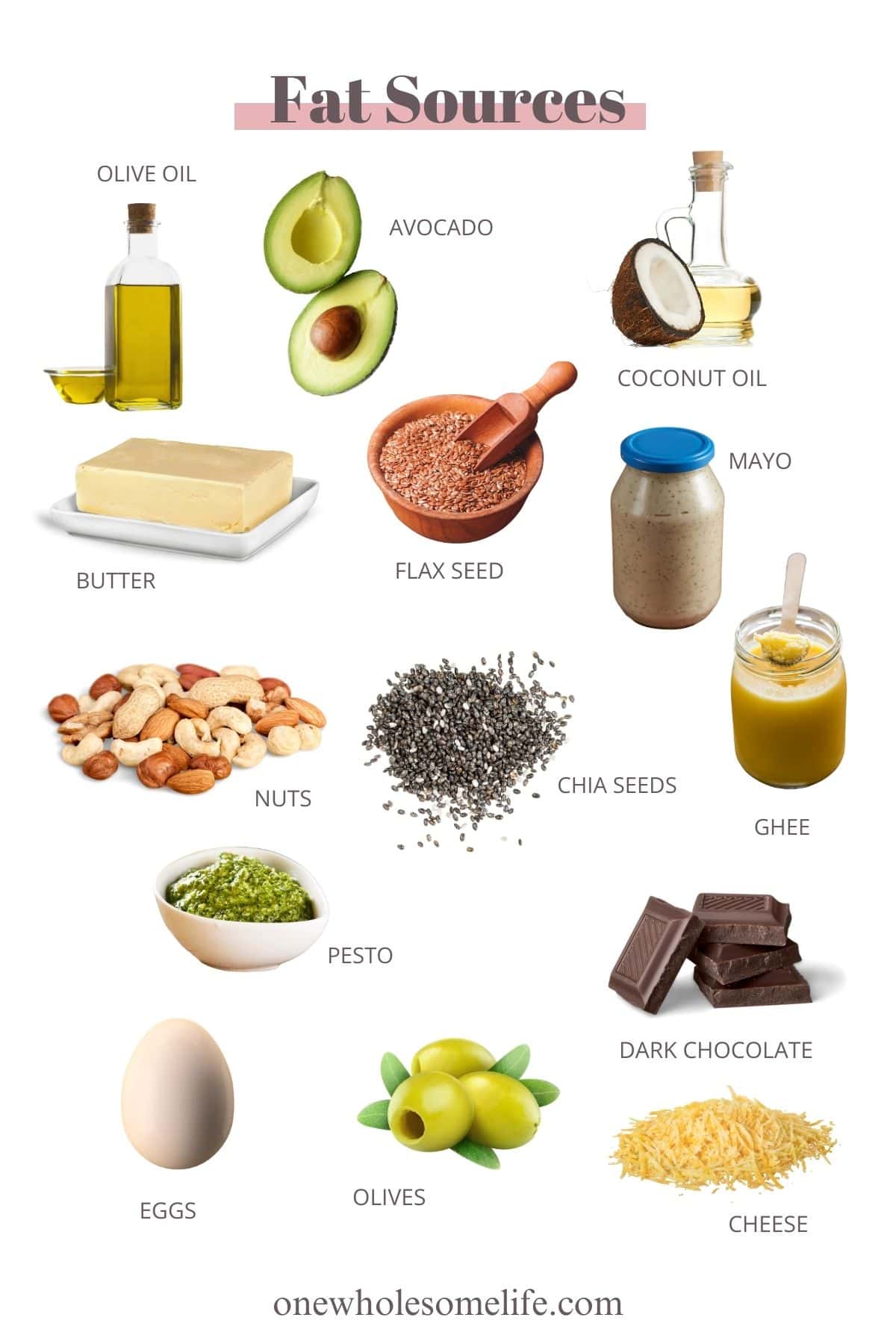
What does “tracking macros” actually mean?
The term tracking macros means that you are logging your food in an app (such as MyFitnessPal). And rather than focusing on your overall daily calories, you are aiming to hit a particular number each day for Carbs, Fat, and Protein.
Why Track Macros?
When it comes to nutrition, you’ve probably heard the saying, “You are what you eat.” Well, there’s more to it than just eating “healthy” foods. How much and what balance of these foods you consume is equally important, and that’s where counting macros comes in.
Tailored Nutrition: Counting macros isn’t just about counting calories. As a certified macro coach, I’ve seen firsthand how it’s about ensuring you’re getting the right balance of proteins, carbs, and fats.
This balance is crucial because each macronutrient plays a specific role in your body. By counting macros, you tailor your diet to your body’s needs, whether you’re looking to lose weight, gain muscle, or just maintain a healthy lifestyle.
Maximize Fat Loss & Minimize Muscle Loss: This is also known as changing your body composition. Weight loss and fat loss are not the same thing.
Paying attention to your macronutrient breakdown and protein intake will help you to lose FAT and maintain your MUSCLE which will give you a more “toned” look.
More Than Just Weight Loss: While many people start counting macros for weight loss, it’s much more than that. It’s a way to understand what you’re putting into your body and how it affects your energy levels, performance, and overall health.
When you balance your macros, you’re likely to notice improvements in your energy, sleep, and even mood.
Flexibility and Sustainability: One of the biggest benefits of counting macros is the flexibility it offers. Unlike restrictive diets, macro counting doesn’t label foods as “good” or “bad.” Instead, it allows for a more balanced approach to eating. Yes, you can have that slice of pizza or a piece of cake, as long as you’re mindful of how it fits into your daily macro goals. This flexibility makes it easier to stick to in the long run, compared to more rigid diets.
Counting macros is a powerful tool for understanding and controlling your diet. It goes beyond simplistic calorie counting, offering a balanced approach to nutrition that can be tailored to your individual goals and needs.
Looking for macro-friendly dinner ideas? Check out my comprehensive list of macro friendly dinner recipes next.
Counting Calories vs. Counting Macros: What’s the Difference?
While counting calories and counting macros might seem similar, they have distinct differences that impact your nutrition and overall personal goals.
Calorie Counting: This is all about the quantity of food. Calories are a measure of energy, and calorie counting involves making sure you don’t eat more calories than you burn in a day. It’s a simple approach that can be effective for weight loss, but it doesn’t consider the quality of the food you’re consuming. For instance, a candy bar and a bowl of salad might have the same number of calories, but their nutritional values are worlds apart.
Macro Counting: This method takes things a step further. Instead of just looking at calories, counting macros focuses on the quality of the food. It divides your food into three main categories: proteins, carbs, and fats, and you track how much of each you consume.
This approach not only considers how much energy you’re taking in but also ensures that you’re getting the right nutrients to support different bodily functions. It promotes a more balanced diet and can be more effective for specific goals like muscle building, improving athletic performance, or even just feeling more energized throughout the day.
I like to look at it like this: counting macros is like getting a detailed report of your diet, while counting calories is like getting a summary. By focusing on macros, you get a clearer picture of your nutritional intake, leading to more balanced and sustainable eating habits. So, while calorie counting can be a good starting point, transitioning to macro counting can offer a more comprehensive approach to healthy eating.
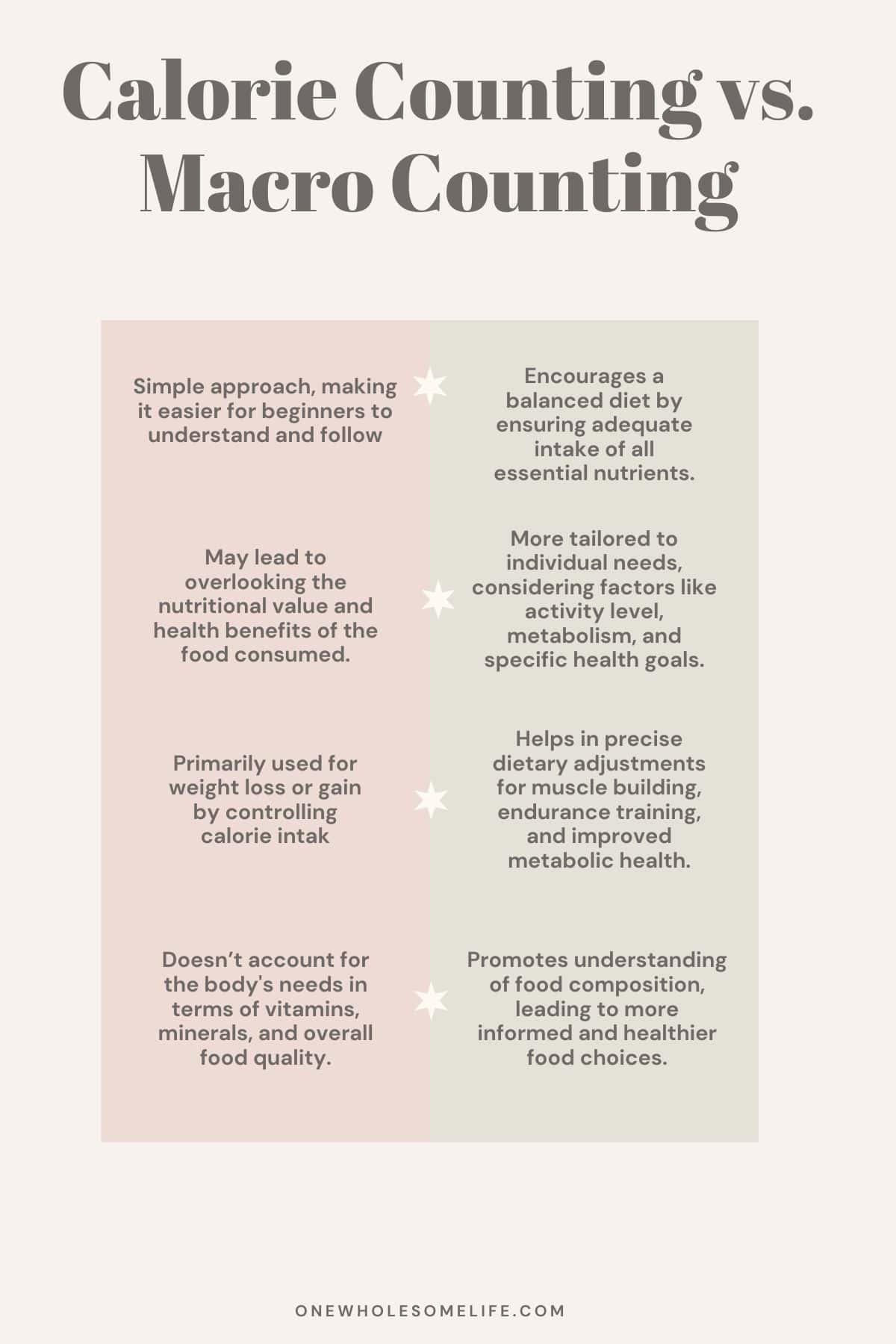
How To Calculate Your Macro Goals
Step 1: Determine Your Maintenance Calories
Your maintenance calories are the number of calories you need to maintain your current weight. This is your first step in your macro counting journey.
The easiest way to do this is with a TDEE calculator (total daily energy expenditure). These online calculators provide a convenient way to estimate your daily caloric needs based on your personal data.
Step 2: Determine Your Calorie Goal
After figuring out your maintenance calories, the next step is to set a calorie goal based on what you want to achieve – whether that’s losing weight, gaining muscle, or maintaining your current weight.
Calorie Deficit:
For those looking to lose weight in a healthy and sustainable way, starting with a small calorie deficit is key. A 10% calorie deficit is a great starting point. This means you’ll be consuming 10% fewer calories than what you need to maintain your weight. This approach is gentle enough to be sustainable and minimizes the risk of feeling deprived or encountering negative side effects like extreme fatigue or hunger.
How to Calculate a 10% Deficit:
- Calculate 10% of Your Maintenance Calories: Take your daily maintenance calories and calculate 10% of this number. For example, if your maintenance calories are 2,000 per day, 10% would be 200 calories.
- Subtract This from Your Maintenance Calories: Deduct this number from your maintenance calories to find your new daily calorie target. Continuing the example above, you would subtract 200 from 2,000, resulting in a daily intake of 1,800 calories.
- Adjust As Needed: Monitor your progress and how you feel. If you’re losing weight too quickly, feeling tired, or hungry all the time, you might need to reduce the deficit slightly. On the other hand, if you’re not seeing any changes after a few weeks, you might need to slightly increase the caloric deficit.
Starting with a small deficit like this helps your body adapt gradually, making it more likely for you to stick with the changes and see long-term results. Remember, the goal is to create a healthy balance that you can maintain over time, not a quick fix.
For Muscle Gain:
- Caloric Surplus: To support muscle gain, you need to consume more calories than your body burns. A recommended starting point is a surplus of 10-15%. This means eating 10-15% more calories than your maintenance level. This surplus provides your body with the necessary energy and building blocks to build muscle.
- How to Calculate: Just like calculating a deficit, determine 10-15% of your maintenance calories and add this number to your maintenance calories. For instance, if your maintenance is 2,500 calories, adding a 15% surplus means an additional 375 calories, bringing your total to about 2,875 calories per day.
- Gradual Increase Approach: Alternatively, you can gradually increase your intake. Start by adding an extra 50-100 calories per day every 1-2 weeks. This method can be particularly effective as it allows your body to adapt gradually, minimizing excess fat gain.
Remember, while increasing your calorie intake is essential for muscle growth, it’s also important to focus on the quality of your calories. Ensure that these additional calories come from nutritious foods that are rich in proteins, healthy fats, and complex carbohydrates. Also, consider pairing your diet with a consistent strength training routine to maximize muscle growth.
Monitoring your progress and adjusting your intake based on your results and how you feel is crucial. If you’re not seeing desired muscle gains or are gaining too much fat, you may need to adjust your caloric surplus accordingly.
Step 3: Calculate Your Macros
Now that you have your daily calorie target, it’s time to break those calories down into macronutrients: carbohydrates, proteins, and fats. A balanced approach is key here, and a good starting point is the 40:30:30 ratio – 40% of your calories from carbs, 30% from protein, and 30% from fat. This macronutrient ratio is a popular choice as it offers a balanced mix of energy, muscle support, and overall nutritional needs.
If you’re feeling overwhelmed with these calculations, don’t worry. As a certified macro coach, I offer personalized macro counts to take the guesswork out of the equation.
How to Calculate Your Macros:
- Protein: Aim for 0.8 to 1 gram of protein per pound of body weight or lean body mass, especially if you are physically active. Protein is crucial for muscle repair and growth, and it also helps in keeping you satiated.
- Carbohydrates: After setting your protein intake, allocate 40% of your calorie intake to carbs. Carbs are your body’s main energy source, so they’re especially important if you’re active.
- Fats: Allocate the remaining 30% of your calories to fats. Fats are vital for hormonal balance, nutrient absorption, and overall health.
Calculating Grams from Percentages:
- To convert these percentages into grams, remember that 1 gram of protein and carbohydrates each contain about 4 calories, and 1 gram of fat contains about 9 calories.
- For example, if your daily calorie target is 1,800 calories, 40% for carbs would be 720 calories, which translates to 180 grams of carbs (since 720 divided by 4 equals 180).
- Similarly, calculate the grams for protein and fats based on their calorie allocation and caloric content per gram.
Adjusting Your Macros:
- These ratios are a starting point. You can adjust them based on your body’s response, personal preferences, and specific goals. Some might prefer a higher protein intake or a lower carb approach, depending on their lifestyle and dietary preferences.
- Pay attention to how your body feels and performs with these ratios, and don’t hesitate to tweak them. The key is to find a balance that works for you and can be sustained in the long run.
Alternatively, you can use a specialized macro calculator. These calculators allow you to input your daily calorie target and then suggest an ideal split between proteins, carbs, and fats, tailoring it to your specific goals.
It’s important to note that while macro calculators are useful tools, they aren’t as personalized as working with a macro coach. While calculators follow general formulas, a certified macro coach like myself can offer customized calculations that take into account not just your physical metrics, but also your lifestyle, food preferences, and specific health goals. This personalized approach often leads to more sustainable and effective results, as it’s tailored specifically to you.
Remember, there’s no one-size-fits-all approach to macro distribution. It’s about finding what works best for your body and your goals. Listening to your body and making adjustments as needed is an integral part of this process.
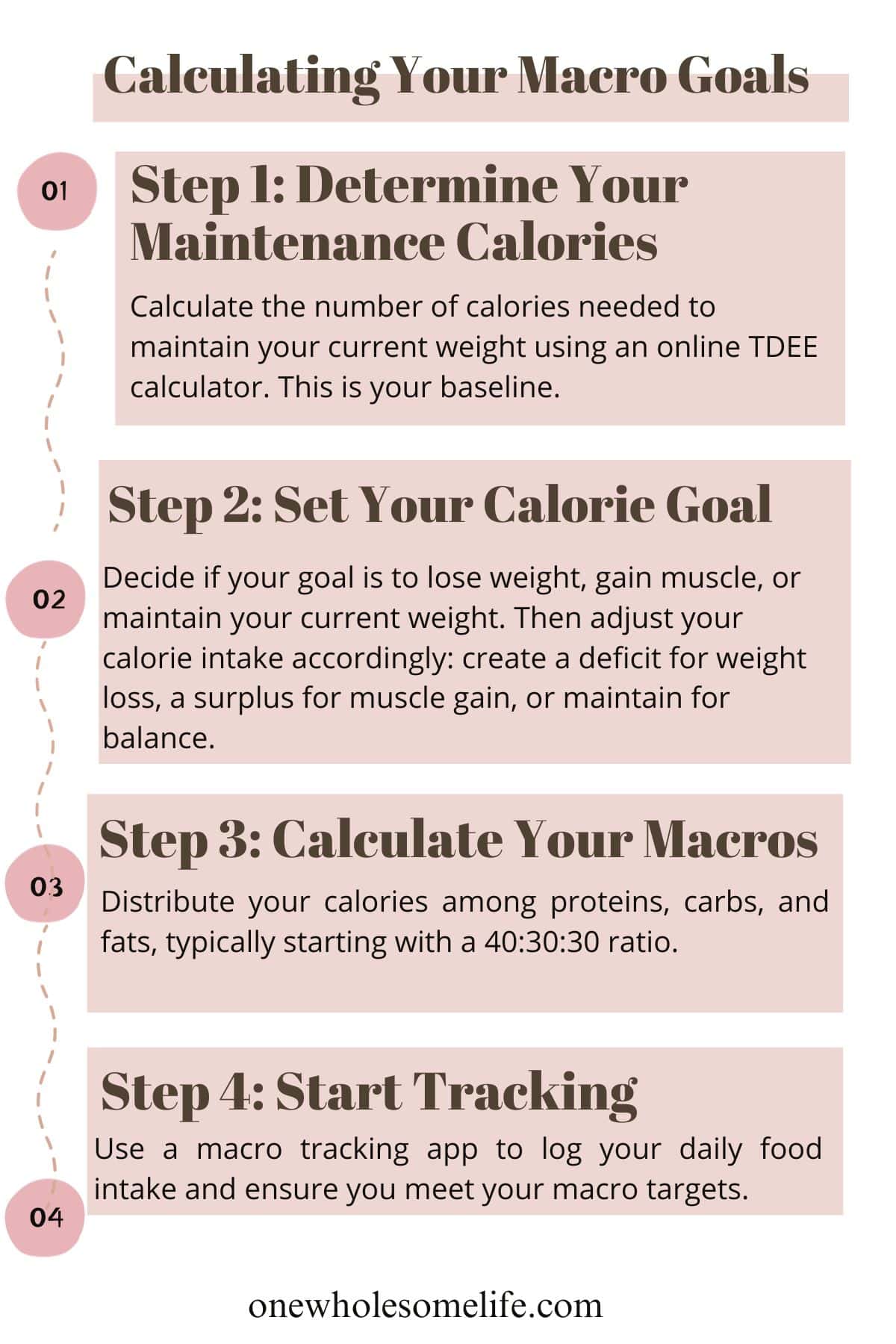
Understanding Food Labels
Navigating food labels is a key skill in macro counting. Understanding what’s in your food helps you make informed choices and ensures you’re on track with your macro goals.
Key Components of Food Labels:
Serving Size: This is usually at the top of the nutrition label. It’s crucial to note the serving size and how many servings are in the package – often, what seems like a single serving is actually more.
Calories: This number indicates how many calories are in one serving. Remember, if you eat more than one serving, you need to multiply the calories accordingly.
Macronutrients: Below the calories, you’ll find the three macros: fats, carbohydrates, and protein, typically listed in grams. Pay attention to these numbers as they are the core of your macro counting.
Fiber and Sugars (under Carbohydrates): Dietary fiber is important for digestion, and sugars (especially added sugars) should be consumed in moderation.
Micronutrients: Vitamins and minerals are listed toward the bottom of the label. While they’re not part of macro counting, they’re essential for overall health.
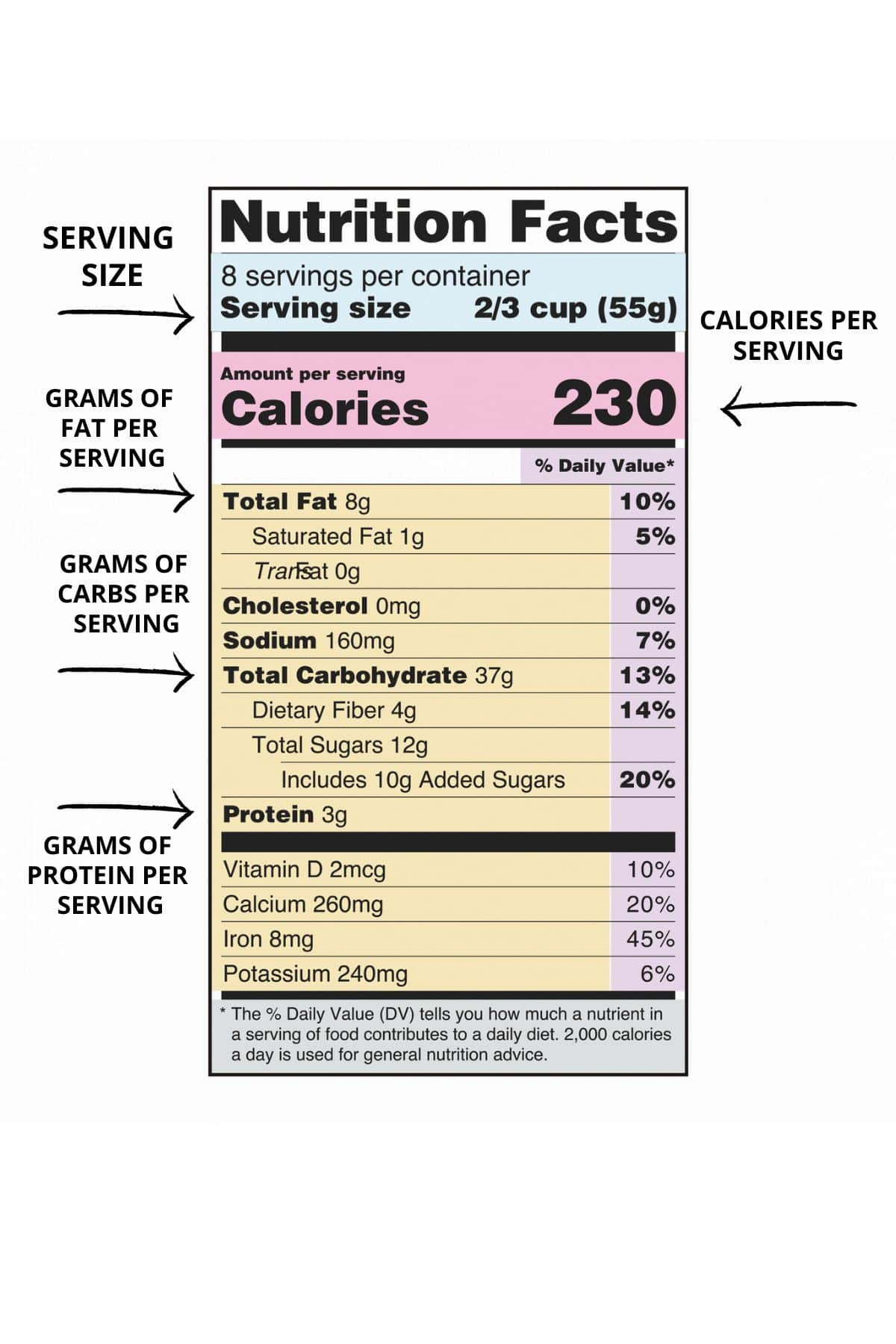
Understanding Ingredients:
- The ingredients list can also tell you a lot about the food’s nutritional value. Ingredients are listed in order of quantity, from highest to lowest.
- Look for whole food ingredients and be wary of long lists of additives or ingredients you can’t pronounce.
Tips for Macro Counting with Food Labels:
- Always check the serving size first – it can be misleading.
- Focus on the macro content per serving. If you’re tracking macros, these numbers are what you’ll input into your tracking app or diary.
- Remember that food labels can have a margin of error, so use them as a guide rather than an absolute measure.
Understanding nutrition labels is a powerful tool in your macro counting journey. It takes a bit of practice, but once you get the hang of it, it becomes much easier to make choices that align with your nutritional goals.
How to Track Macros Using an App
Once you’ve determined your macro goals, the next step is to start tracking them. Using a macro tracking app is one of the most efficient ways to do this. These apps not only help you log your food intake but also break down the macros for each food, making it easier to see how you’re doing against your daily goals.
Choosing a Macro Tracking App:
Find an App That Suits Your Needs: There are many apps available, each with different features. Look for apps that have a large food database, barcode scanning for easy logging, and the ability to customize your macro goals.
User-Friendly Interface: Choose an app that is easy to navigate and input data into. The simpler it is to use, the more likely you are to stick with tracking consistently.
MyFitnessPal, Cronometer, MacrosFirst, and Lose It are some of the most popular macro tracking apps.
Setting Up Your Profile:
When you first set up the app, you’ll likely be asked to enter personal information such as age, weight, height, activity level, and health goals. This helps the app provide a more personalized experience.
Set your macro goals based on the calculations you’ve done earlier. Most apps allow you to input the specific gram or percentage goals for each macronutrient.
Logging Your Food:
- Consistency is Key: Try to log your food as accurately as possible. This includes everything you eat and drink throughout the day.
- Use the Barcode Scanner: Many apps come with a barcode scanner feature, making it easy to log packaged foods accurately.
- Logging Homemade Meals: For homemade meals, you can usually search for individual ingredients or find similar dishes in the app’s database. Some apps also allow you to create and save your own recipes.
- Review Your Daily Intake: Most apps provide a daily summary of your macro intake. Use this to assess if you’re meeting your goals and make adjustments as needed.
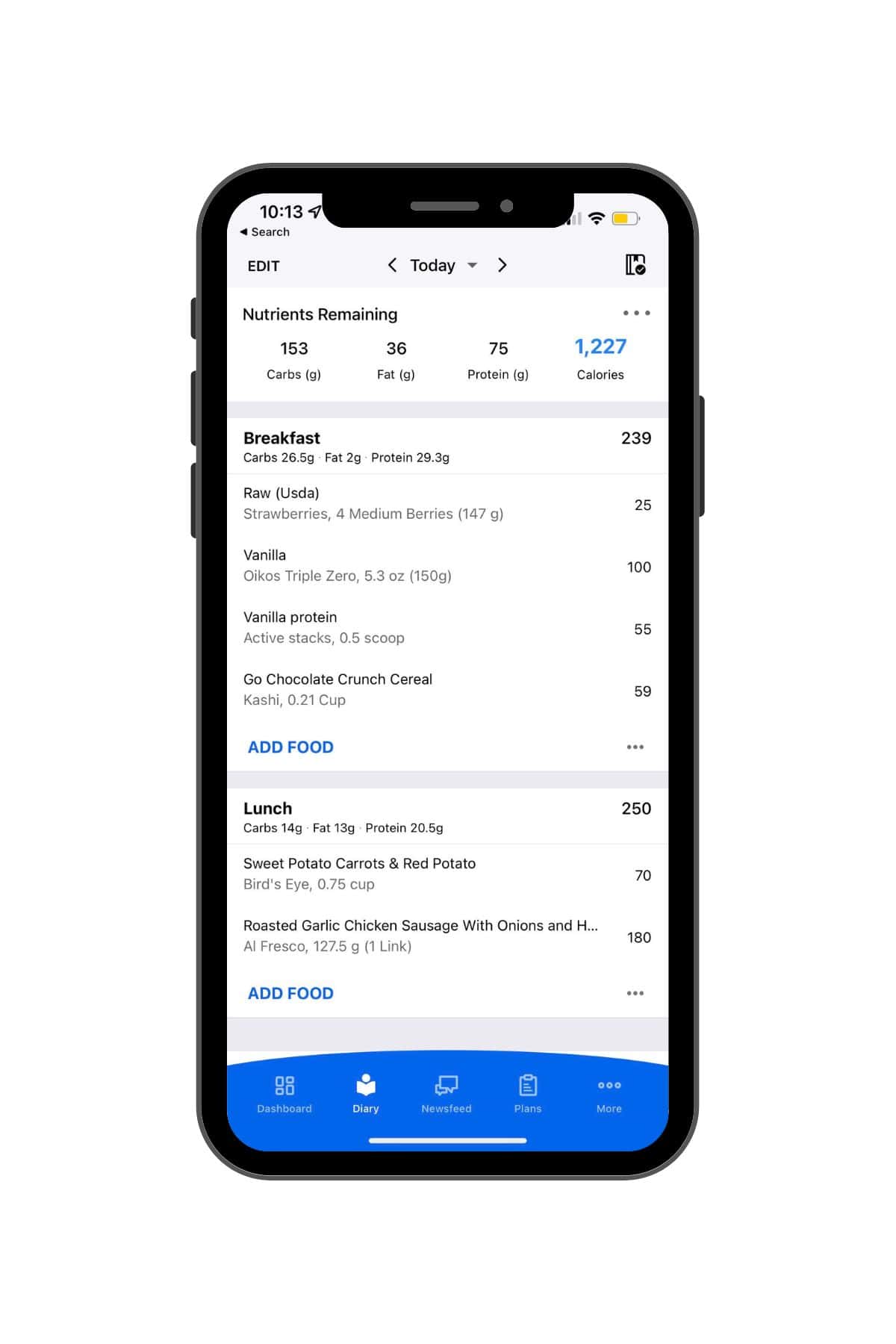
Adjusting Based on Feedback:
- Your app’s data can provide valuable insights. If you’re consistently under or over on certain macros, tweak your diet accordingly.
- Listen to your body as well. How you feel can be just as important as the numbers you’re seeing.
Tracking macros can initially feel a bit overwhelming, but with the help of a good app and consistent logging, it becomes much easier and more intuitive.
Remember, the goal of macro tracking is to help you understand your eating habits better and guide you towards making healthier choices that align with your goals.
Understanding Alcohol Macros
When it comes to tracking macros, alcohol is often the wild card. It’s not a protein, carb, or fat, but it does contain calories – 7 calories per gram, to be exact. Here’s how you can account for alcohol in your macro counting:
Unlike the other macronutrients, alcohol is not essential for your body, but it’s still a source of calories. Alcohol contains calories that need to be accounted for, but it doesn’t fit neatly into the standard macro categories of proteins, carbs, or fats.
How to Calculate Alcohol Macros
First, find out the total calorie content of your alcoholic beverage. Since alcohol is primarily a source of empty calories, you can equate its caloric content to either carbs or fats. This is done by dividing the total calories by 4 (for carbs) or 9 (for fats).
Example Calculation: If your drink has 100 calories, you can either divide this by 4 to calculate it as 25 grams of carbs, or divide by 9 to equate it to about 11 grams of fat.
Splitting Between Carbs and Fats: Alternatively, you can divide the calories between carbs and fats to distribute them more evenly. For instance, allocate some calories as carbs and some as fats in your daily count.
In your tracking app, you can use the ‘quick add’ feature to input these as either ‘quick carbs’ or ‘quick fats’. This allows you to accurately track the calorie intake from alcohol without affecting your protein intake, which should remain a priority.
It’s important to remember that alcohol can affect your metabolism, appetite, and food choices. While it can fit into a flexible dieting approach, moderation is key.
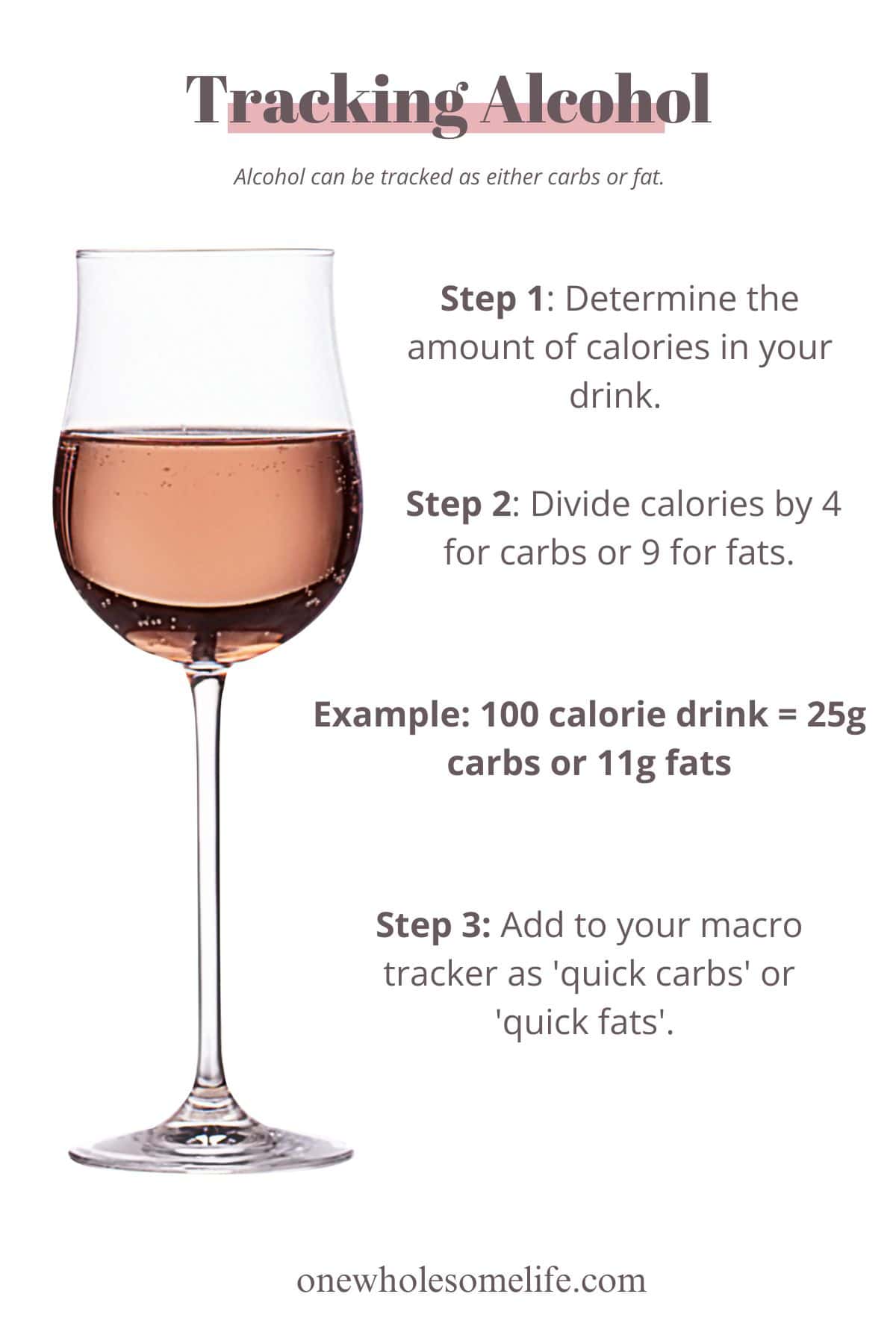
Mastering Portions with a Food Scale
Think of a food scale as your secret weapon in the world of macro counting. It’s not just a tool; it’s your guide to precision and accountability in your diet.
Why Embrace the Food Scale?
- Hello, Accuracy: A food scale is incredibly straightforward to use and it’s the gold standard for measuring your food intake. It goes beyond rough estimates to give you the exact amount of what you’re eating.
- Learn Real Portion Sizes: Ever wonder what a serving of pasta really looks like for your calorie goals? Your scale will show you. It’s an eye-opener to what portions align with your macros, helping you to internalize these sizes over time.
- Stay True to Your Plan: Measuring food helps keep your eating on track. By weighing out your meals, you’re less likely to unintentionally overeat, which is easy to do when you’re just eyeballing portions.
Weighing: More Than Just Numbers
- Weight vs. Volume: Switching from measuring cups to a scale can be a game-changer. Did you know that a cup of chopped veggies can vary in actual weight, depending on how finely they’re chopped? Measuring by weight (ounces, grams, mL) eliminates this variability, ensuring you’re not unknowingly adding an extra 200-500 calories to your day. This precision is especially crucial if you’re targeting fat loss.
- Consistency is Key: Using a scale every time you prepare food reinforces consistent habits. Consistency leads to more reliable progress, whether you’re trying to lose body fat, gain muscle, or simply maintain a healthy diet.
Your food scale is more than just a tool; it’s a teacher, showing you the real deal about portions and helping you stick to your nutrition goals.
Practical Tips for Beginners in Macro Counting
As you embark on your journey with the macro diet – it can be A LOT! But don’t fret – there are some straightforward strategies that can make the process more manageable and effective. Here are some tips for beginners:
Pre-log Your Day: This is my TOP TIP for macro tracking. Take 5-10 minutes in the morning (or night before) and enter in your planned meals for the day.
I like to start with DINNER and then work backwards. Add LUNCH and then BREAKFAST and then SNACKS.
Then if you have room you can add in some fun extras (like some garlic bread with dinner) or dessert.
Keep in mind that it is a TENTATIVE plan and you can always switch things around as needed.
Keep Your Meals Simple: Simplicity is key. You don’t need complicated recipes to meet your macro goals. Stick to simple, nutrient-dense foods that are easy to prepare and track. This approach reduces the stress of counting and keeps cooking manageable.
When you get more comfortable with tracking then you can start trying out different recipes with more ingredients.
Repeat Meals: Having a go-to breakfast or standard snacks can simplify your routine. It’s easier to track and balance your macros when you have a few staple meals that you enjoy and are familiar with.
Don’t Skip Tracking, Even If You Eat Something “Bad”: Maintain the Habit: If you indulge in a treat or have an unplanned meal, still log it. Tracking isn’t just about staying within your goals – it’s about understanding your habits and learning how to balance indulgences.
Prep Bulk Proteins: Cook proteins in bulk, like chicken or ground beef, at the start of the week. This way, you have a ready source of protein for your meals, making it easier to hit your macro goals.
Do you need meal prep ideas? Check out these healthy meal prep ideas for weight loss.
Stay Flexible and Adaptable: If you find certain meals or foods don’t work for you, don’t hesitate to change them. Macro counting is a flexible tool, not a rigid set of rules.
Be Patient and Kind to Yourself: Remember, macro counting is a skill that gets easier with time. Be patient with your progress and kind to yourself on days when things don’t go as planned.

Common Mistakes to Avoid in Macro Counting
When starting with macro counting, it’s normal to face challenges and make mistakes. Being aware of these common pitfalls can help you navigate them more effectively.
Not Considering the Difference Between Raw and Cooked Weights
There can be a significant difference in weight (and therefore macros) between raw and cooked foods, especially for items like meat and grains.
The golden rule here is to track your food the way you measured it.
So if you weighed your chicken cooked then you would track it as cooked chicken.
MyFitnessPal will normally have specific entries for the way you cooked your food (steamed veggies, grilled chicken, etc.) so just be sure to select the correct method of cooking.
Obsessing Over Perfection
Let’s be real..life happens and it is going to be next to impossible to stick to your nutrition targets 100% of the time.
Trying to hit your macro targets precisely every single day can lead to stress and burnout. Avoid the perfection trap and aim for consistency, not perfection.
Forgetting to Track Small Bites
Those little snacks or tastes throughout the day add up. Every bite counts so try your best to track everything you consume for an accurate macro count.
Not Adjusting Macros Over Time
Your macro needs might change over time due to factors like weight loss, increased physical activity, or changes in health goals. Regularly reassess and adjust your macros as needed.
Must-Have Tools for Macro Tracking
Alright, so you’re getting into the groove of macro counting. But let’s make sure you’ve got the right tools in your arsenal to make this journey smoother and more effective.
A Trusty Food Scale: Your new best friend! We’ve already talked about how awesome a food scale is, right? It’s like having a truth-telling buddy in the kitchen. No more guessing games about how much chicken is really on your plate. I have both this scale and this scale (for more heavy duty items).
Macro Tracking App: Tech to the rescue! An app like MyFitnessPal isn’t just convenient; it’s a powerhouse for tracking. With features like a barcode scanner and a huge food database, it takes a lot of the guesswork out of logging your meals.
Navigating Macro Counting When Dining Out
Eating out doesn’t have to derail your macro counting efforts. With a bit of planning and some savvy strategies, you can still enjoy restaurant meals and have a social life while staying on track with your goals.
Do Your Homework: Many restaurants have their menus online, complete with nutritional information. Some even offer calculators that let you modify dishes to fit your macro needs. Take a look ahead of time and plan what you’ll order.
Stick to Simple Dishes: Grilled, baked, or steamed dishes are often easier to estimate in terms of macros than complex sauces or multi-ingredient meals. Choose dishes with clear protein, carb, and fat components.
Log Smartly: In your macro tracking app, search for a similar entry to what you’re eating. For example, if you’re having ramen, ensure the entry you select has a sensible amount of carbs for the noodles. Adjust the serving size as needed for accuracy.
Breaking Down Meals: Log the components of your meal separately. For instance, if you have a power bowl, log each ingredient – like chicken breast, brown rice, nuts, etc. – individually. This method gets easier with experience and a good understanding of portion sizes.
Portion Control: Consider sharing a dish, ordering a starter as a main, or packing half to take home. This helps manage portion sizes more in line with your macro goals.
Don’t Be Shy to Customize: Feel free to ask for dressings on the side, swap out sides, or request modifications that align better with your macros. Most restaurants are happy to accommodate such requests
Estimate and Log: While it’s unlikely to be as precise as home cooking, do your best to estimate and log your meal. Remember, consistency in tracking is key, not perfection.
Enjoy the Experience: Dining out is about the food and the overall experience. Savor the moment and the company you’re with.
Eating out while counting macros is about making informed choices, estimating as best you can, and, most importantly, enjoying the experience.
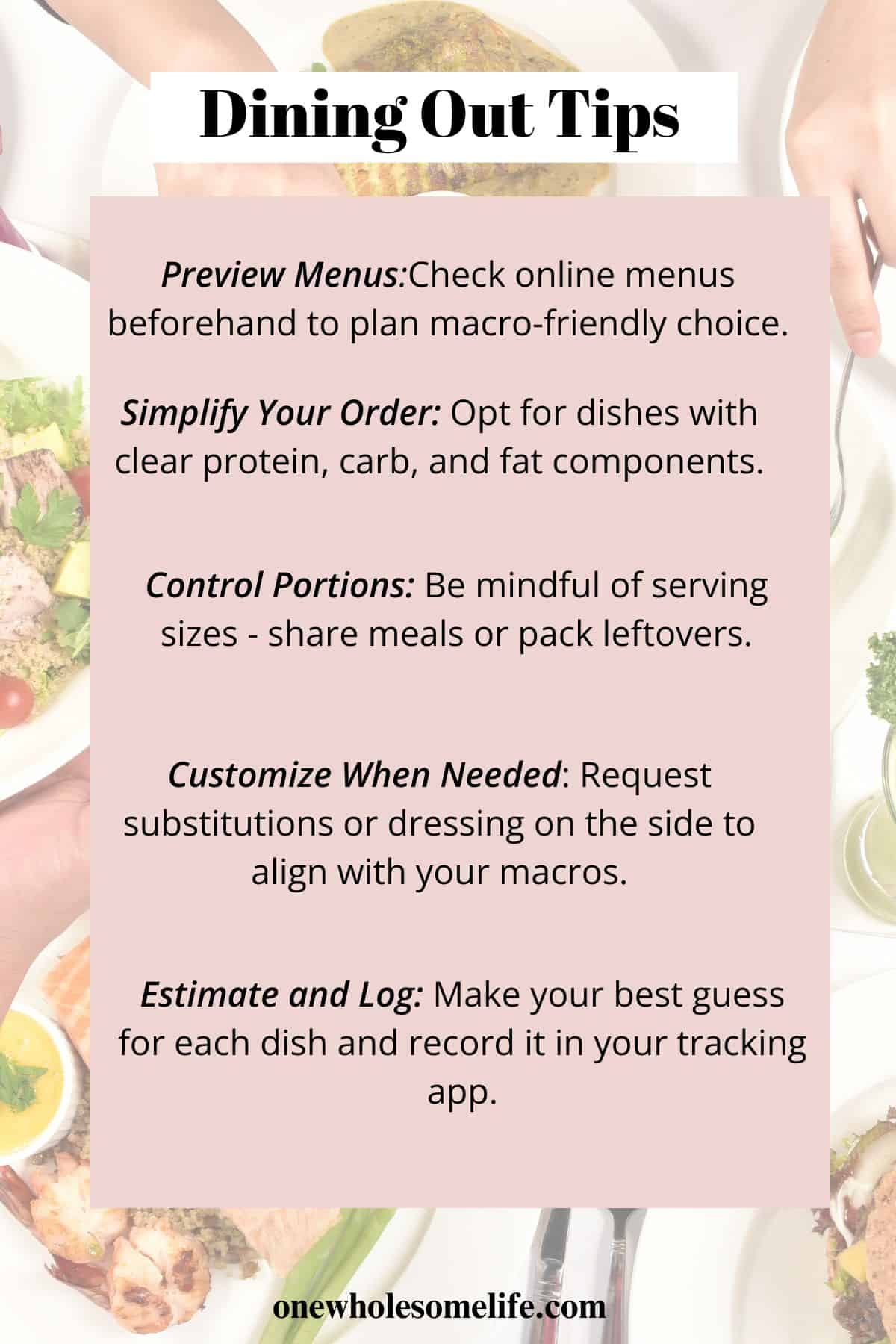
Transitioning Away from Macro Counting
So, you’ve gotten the hang of macro counting, and it’s been a great journey, right? But here’s the thing: the end game isn’t to be tethered to a food scale and tracking app forever. The ultimate goal is to develop a lasting, intuitive understanding of your nutritional needs.
Gradual Shift to Mindful Eating
Listen to Your Body: Start paying more attention to your hunger cues and how different foods make you feel. Your body is incredibly smart and can guide you towards what it needs once you learn to listen.
Trust Your Knowledge: After spending time counting macros, you’ll have a solid understanding of portion sizes and the nutritional content of foods. Use this knowledge to make informed choices without the numbers.
Balancing Without Counting
Mindful Portions: You don’t need a scale to balance your plate. Aim for a variety of proteins, fats, and carbs at each meal, but don’t stress about exact quantities.
Flexible Approach: Allow yourself flexibility. Some days you might crave more carbs, and that’s okay. Other days, you might lean towards protein. It’s all about balance over time.
Keeping a Check on Habits
Occasional Check-ins: If you feel like you’re drifting off track, it’s okay to go back to macro counting for a short period to recalibrate.
Healthy Habits: Continue with the healthy eating habits you’ve developed, like staying hydrated and eating regular, balanced meals.
Transitioning away from strict macro counting is a step towards a more relaxed and sustainable relationship with food. It’s about using the skills and knowledge you’ve gained to maintain a healthy, balanced diet in a way that feels natural and enjoyable.
Remember, the journey towards health and wellness is not just about numbers; it’s about creating a lifestyle that supports your well-being in every way.
Looking to dive deeper into macro counting or need personalized macro counts tailored to your goals? I’ve got just the thing for you.
Check out my comprehensive ‘Getting Started with Macros’ guide and get your own custom macro counts crafted by a certified macro coach – me! This guide is packed with everything you need to embark on your macro counting journey with confidence and clarity.
